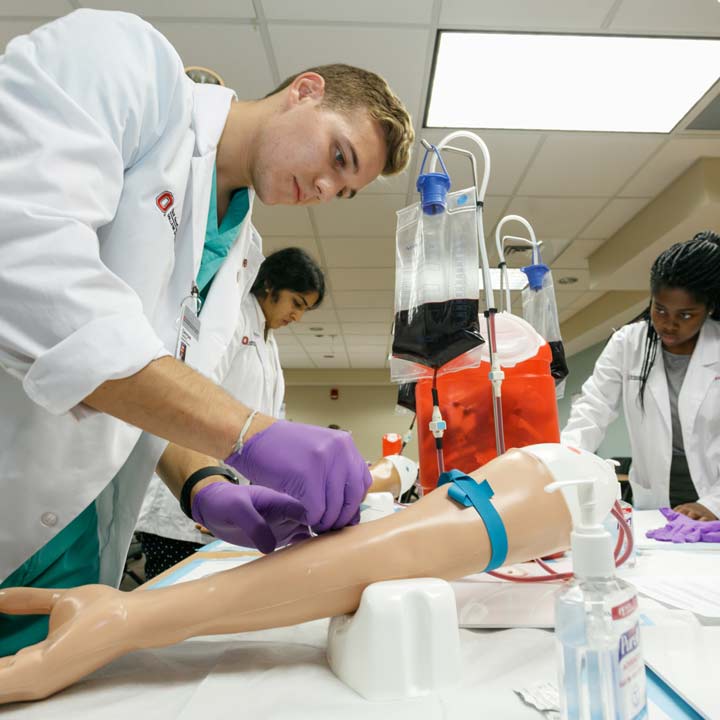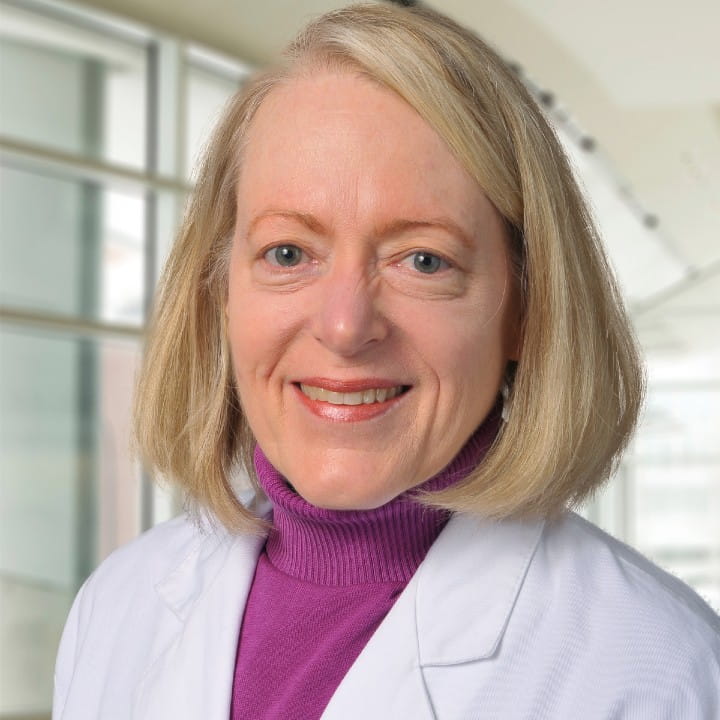
Comprehensive Esophageal Health Center opens with more convenient, streamlined care
 The American Gastroenterological Association (AGA) elected Sheryl Pfeil, MD, to its Governing Board in May 2022. Dr. Pfeil is a practicing gastroenterologist, a clinical professor of Internal Medicine in the Ohio State College of Medicine and medical director of the Clinical Skills Education and Assessment Center (CSEAC) at the College of Medicine. She serves as the education and training councilor on the Governing Board.
The American Gastroenterological Association (AGA) elected Sheryl Pfeil, MD, to its Governing Board in May 2022. Dr. Pfeil is a practicing gastroenterologist, a clinical professor of Internal Medicine in the Ohio State College of Medicine and medical director of the Clinical Skills Education and Assessment Center (CSEAC) at the College of Medicine. She serves as the education and training councilor on the Governing Board.
Dr. Pfeil’s commitment to medical education spans more than 20 years. The board seat is a continuation of her efforts to advance patient care by promoting ongoing learning for medical students, residents, fellows and established professionals. It’s also a continuation of service to the AGA. Over the years, she’s been part of the organization’s Education and Training Committee and has served as a past chair of the Advisory Council for the Academy of Educators. She’s also current co-chair of the Future Leaders Program, which pairs early-career gastroenterologists with mentors who help prepare them for leadership roles in the AGA and their own institutions.
“I fully believe in the importance of education at every level,” Dr. Pfeil says. “What drives me is helping other providers realize their potential for the benefit of the patients they will serve.”
 Dr. Pfeil’s role as medical director at CSEAC grew out of a simple request. At the time, she was program director of the college’s gastroenterology fellowship. While physicians in the program were highly skilled and advanced learners, she wasn’t always comfortable with the fact that their first experience doing certain procedures was with patients.
Dr. Pfeil’s role as medical director at CSEAC grew out of a simple request. At the time, she was program director of the college’s gastroenterology fellowship. While physicians in the program were highly skilled and advanced learners, she wasn’t always comfortable with the fact that their first experience doing certain procedures was with patients.
“I felt like there had to be another way,” she says.
As the CSEAC was being developed, Dr. Pfeil was among the first in line to ask that a gastrointestinal simulator tool be included. Her proposal was accepted and the medical center purchased it — and it did the job Dr. Pfeil was hoping it would.
“That’s why I became a fan of simulation,” she said. Seeing what this type of education could do for fellows and students, it’s also what led her to become director of the center.
The CSEAC has grown significantly and now has millions of dollars’ worth of equipment. In 2021, it hosted 37,000 users and 1,800 separate events, including skills assessments, educational sessions and opportunities for independent practice. It serves physicians, nurses and other medical staff from the Ohio State Wexner Medical Center as well as students from throughout the Ohio State College of Medicine.
Operating on two floors and encompassing more than 25,000 square feet, the state-of-the-art facility aims to teach competent, compassionate professionals while fostering educational research. One floor focuses on simulation and procedures, the other on patient interaction, communication and interprofessional work. It’s all intended to help providers gain knowledge and experience.
“The beauty of a simulation center is that no one gets hurt, except for maybe someone’s ego,” Dr. Pfeil says. “And we even try to protect that.”
A variety of procedures can be simulated in the center, from simple tasks like blood draws and intravenous starts to more complex undertakings, such as colonoscopies, laparoscopies and coronary artery anastomoses. Simulation provides hands-on experience that can be invaluable for students and established providers alike.
For instance, teaching physicians in using ultrasound at the point of care recently has become a significant focus. The center also provided extracorporeal membrane oxygenation (ECMO) education during the height of the COVID-19 pandemic.
Currently, there are several ongoing teaching programs as well:
The latter two programs operate under a contract with the Ohio Department of Health and are open to maternal health care providers across the state.
While much of the center’s work is technical in nature, improving interactions with patients and other professionals is also a focus. The center’s Standardized Patient program allows learners to interact with live individuals in a practice setting and get constructive feedback on improving patient rapport. It’s a big change from when new physicians had to bumble their way through their first histories and physical exams. The ultimate goal is to improve patient care.
“We ask a great deal of our health care providers in terms of communication,” Dr. Pfeil says. “Sometimes we can help students and practitioners become more skilled communicators, and that can be really important. If you’re not obtaining the patients’ buy-in and you’re not able to enlist them as a partner in their care, they’re less likely to reach their health goals.”
Programs are also designed to enable providers to run through simulations of critical events to see how they respond and interact with one another.
“A team of experts is not always an expert team,” Dr. Pfeil says. Simulated events help those experts learn to work together better.
Just as she does for the AGA, Dr. Pfeil uses education at the medical center and college to help health care professionals do their jobs better and to make medicine better — all for the good of patients.
“I love trying to look at what educational solutions might have the biggest, most far-reaching impact,” Dr. Pfeil says.
With the rapid pace of change in medicine and technology, she knows medical professionals will always be learning. Not just about what’s new, but also about what’s possible.
“Every new idea, once it comes to the table, can inspire us to look at things more creatively and in different ways,” she says.